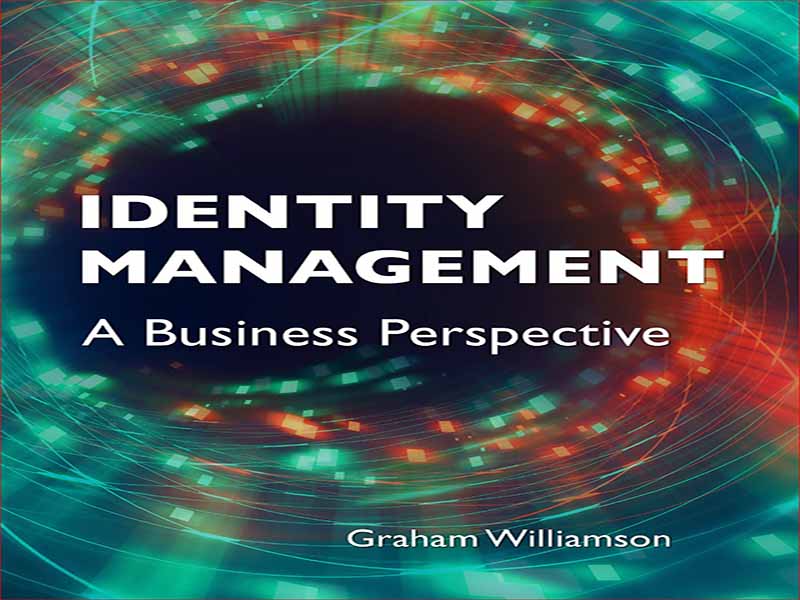- عنوان: Identity Management
- نویسنده: Graham Williamson
- حوزه: کنترل دسترسی
- سال انتشار: 2017
- تعداد صفحه: 256
- زبان اصلی: انگلیسی
- نوع فایل: pdf
- حجم فایل: 3.88 مگابایت
در سالهایی که از تألیف کتاب من، مدیریت هویت: یک آغازگر، میگذرد، وظیفه مدیریت هویت و دسترسی بهطور قابلتوجهی پیچیدهتر شده و مرتبهای از اهمیت بیشتری پیدا کرده است. به دلیل ابر و نیاز به پشتیبانی از دستگاه های تلفن همراه پیچیده تر شده است. اهمیت آن بیشتر شده است زیرا راه حل های شبکه ای گذشته دیگر کافی نیستند. این کتاب به دنبال کمک به افسر ارشد اطلاعات (CIO) یا بهتر است به مدیر ارشد دیجیتال (CDO) در مقابله با این پیچیدگی و استفاده از داده های هویتی سازمان برای استقرار یک محیط کارآمد و ایمن فناوری اطلاعات (IT) کمک کند. سازمانهایی که میتوانند این کار را انجام دهند به طور بالقوه میتوانند به مزایای قابل توجهی دست یابند: روابط بهتر با کارکنان، تعامل امنتر با پیمانکار، روابط سودآورتر با مشتری، و واحدهای تجاری قدرتمند که در نهایت میتوانند اطلاعات بلادرنگی در مورد سطح موجودی، نرخ تولید، قیمتهای بازار و رضایت مشتری دریافت کنند. . برای آن دسته از سازمانهایی که نمیتوانند به چالش مدیریت هویت رسیدگی کنند، اصطلاح «تحول دیجیتال» معنای خاصی خواهد داشت. ده سال پیش، مدیریت هویت و دسترسی (IAM) به خوبی تقسیمبندی شد و درک آن نسبتاً آسان بود. ده ها فروشنده در بازار وجود داشت، و پس از تعیین اندازه و تمایل یک شرکت به فهرست سازمانی، به عنوان یک مشاور، تعریف یک راه حل برای من نسبتا آسان بود. من از بازدید از مشتریان، گوش دادن به اینکه چگونه فروشندگان آنها را بداخلاق کرده بودند، و توضیح مختصری از راه پیش رو برای رسیدن به اهداف IAM خود لذت می بردم. سپس “ابر” رسید. ناگهان، لازم بود که الگوی قدیمی دایرکتوریهای سازمانی و فایروالها را در محیط بیرون بیاندازیم و بفهمیم که چگونه از باز کردن دایرکتوری سازمانی به جهان جلوگیری کنیم. در همان زمان، تعیین نحوه پشتیبانی از نرمافزار بهعنوان یک سرویس (SaaS) بدون همگامسازی دادههای هویت با ابر ضروری بود. با سیستم های مدیریت منابع انسانی و هویت (IdM) در شبکه داخلی و برنامه های کاربردی SaaS در اینترنت، مقداری “جادو” مورد نیاز بود. اما راه حل هایی در دسترس بود و ارائه دهندگان ابری شروع به پشتیبانی از هویت در ابر و پروتکل SAML به درجات مختلف کردند. سپس BYOD آمد. به طور ناگهانی، کاربران از هر جایی با دستگاههای مختلف وارد شدند. دیگر نمی توان به آنها برای استفاده از محیط عملیاتی استاندارد شرکت (SOE) اعتماد کرد. آنها دیگر در شبکه شرکتی نبودند و هر کسی در هر زمانی از شبانه روز می توانست از دستگاه های آنها استفاده کند. اما راه حل ها به سرعت توسعه یافته اند. اکنون راههای جدیدی برای پشتیبانی از دسترسی از هر نقطه توسط هر کسی در هر زمان وجود دارد. توسعه پروتکلهایی مانند OpenID Connect و OAuth و ابتکاراتی مانند Fast IDentity Online (FIDO) امنیت کاملی را برای دسترسی خارجی به سیستمها و دادههای حفاظت شده شرکت فراهم میکند. اکنون اینترنت اشیا (IoT) در دست ما است: چگونه هویت اشیا را مدیریت کنیم؟ چگونه اجازه دسترسی امن به امکانات شرکت را می دهیم؟ و در مورد فناوری بلاک چین چطور؟ آیا برای موقعیت هایی که اجزای هویت را می توان در چندین مخزن داده توزیع کرد مناسب است؟ مهم است که ما با پیشرفتهای فناوری همراه باشیم و چارچوبهای خود را برای درک این چالشها و استفاده از فرصتهای موجود گسترش دهیم.
In the years since the book I coauthored, Identity Management: A Primer, was published, the identity and access management task has become significantly more complex, and an order of magnitude more important. It has become more complex because of the cloud and the necessity to support mobile devices. It has become more important because the networking solutions of yesteryear are no longer sufficient. This book seeks to assist the chief information officer (CIO), or better still the chief digital officer (CDO), in grappling with this complexity and leveraging the organization’s identity data to deploy an efficient and secure information technology (IT) environment. Organizations that can accomplish this can potentially realize significant benefits: better staff relations, more secure contractor engagement, more profitable customer relationships, and empowered business units that can finally get real-time information on inventory levels, production rates, market prices, and customer satisfaction. For those organizations that fail to address the identity management challenge, the term “digital transformation” will have a special meaning. Ten years ago, identity and access management (IAM) was nicely compartmentalized and relatively easy to understand. There were a dozen vendors in the market, and after determining a company’s size and propensity for an enterprise directory, as a consultant it was relatively easy for me to define a solution. I enjoyed visiting clients, listening to how vendors had bamboozled them, and explaining a succinct way forward to reach their IAM goals. Then the “cloud” arrived. Suddenly, it was necessary to throw out the old paradigm of enterprise directories and firewalls at the perimeter and figure out how to avoid opening up the enterprise directory to the world. At the same time, it was necessary to determine how to support software as a service (SaaS) applications without synchronizing identity data to the cloud. With the HR and identity management (IdM) systems on the internal network and the SaaS applications on the Internet, some “magic” was needed. But solutions were available, and cloud providers started supporting identity in the cloud and the SAML protocol, to varying degrees. Then came BYOD. All of a sudden, users were coming from anywhere with a wide variety of devices. They could no longer be relied upon to use the company’s standard operating environment (SOE). No longer were they inside the corporate network, and their devices could be used by anyone at any time of the day or night. But solutions have developed rapidly. There are now new ways of supporting access from anywhere by anyone at any time. The development of protocols such as OpenID Connect and OAuth and initiatives such as Fast IDentity Online (FIDO) provide solid security for external access to protected corporate systems and data. Now the Internet of Things (IoT) is upon us: how do we manage the identity of things? How do we allow secure access to corporate facilities? And what about blockchain technology? Is it appropriate for situations where components of identity can be distributed across multiple data repositories? It is important that we keep up with technological developments and extend our frameworks to understand these challenges and take advantage of the attendant opportunities.
این کتاب را میتوانید بصورت رایگان از لینک زیر دانلود نمایید.
Download: Identity Management



































نظرات کاربران